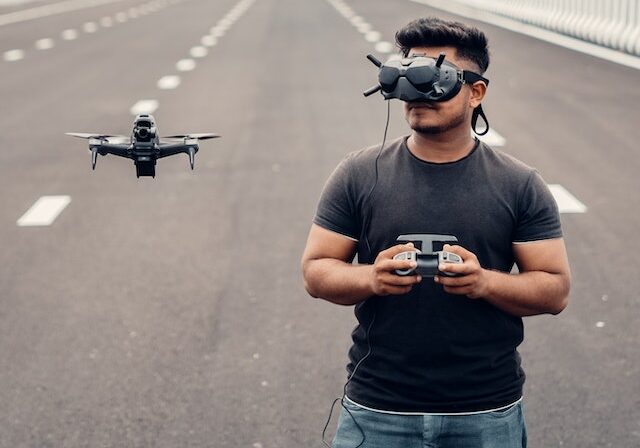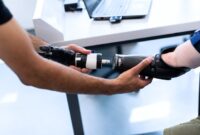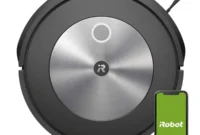Drone technology has advanced significantly in recent years, and one of the key components that enables their autonomous flight capabilities is GPS (Global Positioning System). GPS allows drones to accurately determine their position, navigate, and execute various flight functions. However, like any technology, GPS on drones can encounter issues that affect its performance. In this article, we will explore common GPS problems faced by drone pilots and provide troubleshooting tips to help resolve these issues effectively.

Understanding Drone GPS
Drone GPS technology plays a crucial role in enabling the autonomous flight capabilities of drones. GPS, or Global Positioning System, allows drones to accurately determine their position, navigate, and execute various flight functions. Understanding how drone GPS works and its key components is essential for drone pilots to make the most of this technology and troubleshoot any issues that may arise.
How Drone GPS Works
Drone GPS relies on a network of satellites that orbit the Earth. These satellites continuously emit signals that can be received by GPS receivers on the drone. The receiver calculates the drone’s position based on the time it takes for the signals to travel from multiple satellites to the drone’s receiver. By triangulating these signals, the GPS receiver can accurately determine the latitude, longitude, and altitude of the drone.
Components of Drone GPS
Drone GPS consists of several key components that work together to provide accurate positioning and navigation:
- GPS Receiver: The GPS receiver is a crucial component that receives signals from the satellites and calculates the drone’s position. It uses a built-in antenna to capture the signals and processes the data to determine the drone’s coordinates.
- Satellites: The GPS satellites are part of a network orbiting the Earth. These satellites transmit signals that carry information about their location and the time the signals were transmitted. A drone needs to receive signals from multiple satellites to accurately calculate its position.
- Antenna: The antenna on the drone receives the signals from the satellites. It is essential to ensure that the antenna has a clear line of sight to the sky for optimal signal reception. The antenna should be positioned correctly and remain undamaged to maintain a strong GPS signal.
- GPS Software: The GPS software installed on the drone’s flight controller processes the signals received by the GPS receiver. It calculates the drone’s position, speed, and altitude based on the satellite data. The software also enables autonomous flight modes and provides real-time positioning information to the pilot.
Importance of Drone GPS
Drone GPS is a vital component that enhances the capabilities and safety of drones. Here are some key reasons why GPS is crucial for drone operations:
- Positioning and Navigation: GPS allows drones to accurately determine their position and navigate in three-dimensional space. This enables autonomous flight features such as waypoint navigation, follow-me mode, and return-to-home functionality.
- Flight Stability: By utilizing GPS data, drones can maintain stability and hover in a fixed position even in windy conditions. GPS helps drones counteract external forces and maintain their intended flight path.
- Geofencing and Safety: GPS technology allows for the implementation of geofencing, which defines virtual boundaries for drone flights. Geofencing helps prevent drones from entering restricted airspace or flying into prohibited areas, enhancing safety and compliance with regulations.
- Flight Data Logging: GPS receivers in drones can log flight data, including the drone’s precise position, altitude, and speed. This data can be used for post-flight analysis, performance evaluation, and even creating aerial maps.
Common GPS Issues
Weak Signal Strength
One of the primary issues faced by drone pilots is weak GPS signal strength. This can occur when flying in areas with tall buildings, dense forests, or near large metal structures that obstruct satellite signals. Weak signal strength can result in poor positioning accuracy and intermittent GPS connection.
Inaccurate Positioning
Inaccurate positioning is another common problem encountered by drone operators. This issue can arise due to factors like poor satellite visibility, incorrect calibration, or interference from electromagnetic sources. Inaccurate positioning can lead to errors in flight planning, waypoint navigation, and other autonomous flight functions.
GPS Signal Loss
GPS signal loss is a critical issue that drone pilots may face during flight. This can happen unexpectedly and result in a complete loss of GPS functionality. Signal loss can occur due to software glitches, hardware malfunctions, or external factors such as radio frequency interference.
Troubleshooting Tips
When facing GPS issues with your drone, there are several troubleshooting steps you can take to address the problem effectively. Here are some tips:
Check for Signal Interference
Start by identifying any potential sources of signal interference in your surroundings. Avoid flying near high-voltage power lines, large metal structures, or areas with intense electromagnetic activity. Additionally, make sure your drone’s antennas are correctly positioned and undamaged.
Calibrate the Compass
Compass calibration plays a vital role in ensuring accurate GPS positioning. Use your drone’s calibration feature, following the manufacturer’s instructions, to calibrate the compass properly. This helps eliminate compass errors that can affect GPS accuracy.
Update Firmware and Software
Regularly check for firmware and software updates for your drone and its controller. Manufacturers often release updates to improve GPS functionality and address known issues. Updating to the latest versions can help resolve problems related to GPS performance.
Verify Satellite Connections
Before taking off, ensure that your drone has established a strong connection with the required number of satellites. Most drones display the satellite count on the controller or a mobile app. A sufficient number of satellites ensures better GPS accuracy and stability.
Reset GPS Settings
If you continue to experience GPS problems, consider resetting the GPS settings on your drone. Refer to your drone’s user manual for instructions on how to perform a GPS reset. This can help resolve any software glitches that might be affecting GPS performance.
Perform a Compass Dance
In certain situations, performing a “compass dance” can help improve GPS accuracy. This involves rotating your drone in a particular pattern, which assists in recalibrating the compass and GPS modules. Follow the manufacturer’s guidelines to perform this dance correctly.
Advanced Troubleshooting Techniques
If the basic troubleshooting steps don’t resolve your GPS issues, there are some advanced techniques you can try:
Replacing GPS Antenna
In cases where the GPS antenna is damaged or faulty, replacing it with a new one can help restore GPS functionality. Consult your drone manufacturer or a professional technician for guidance on how to replace the GPS antenna correctly.
Upgrading GPS Module
Consider upgrading the GPS module in your drone if you require improved performance or if the existing module is outdated. Upgraded GPS modules often offer better signal reception, increased accuracy, and enhanced resistance to interference.
Checking Power Supply
GPS issues can sometimes be caused by inadequate power supply to the GPS module. Ensure that all power connections are secure and the battery is charged sufficiently. If you’re using an external GPS module, check its power source and connections as well.
Best Practices for GPS Performance
To maintain optimal GPS performance and minimize the occurrence of issues, here are some best practices to follow:
Pre-flight Checks
Before each flight, perform thorough pre-flight checks. Ensure that your drone’s GPS system is functioning correctly, and the satellite connection is stable. Verify that the compass is calibrated accurately and there are no error messages related to GPS.
Flying in Open Areas
Whenever possible, fly your drone in open areas with a clear line of sight to the sky. This reduces the chances of signal interference from obstructing objects and improves GPS performance.
Avoiding Electromagnetic Interference
Minimize the risk of electromagnetic interference by keeping your drone’s antennas away from other electronic devices. Avoid flying in areas with strong Wi-Fi signals, radio towers, or other sources of electromagnetic radiation.
Conclusion
Troubleshooting GPS issues on a drone can be a challenging task, but with the right knowledge and steps, most problems can be resolved effectively. By understanding common GPS problems, performing basic troubleshooting, and implementing best practices, drone pilots can ensure reliable and accurate GPS performance during their flights.
FAQs
Q1. Why is GPS signal strength important for drones? GPS signal strength is crucial for drones because it determines the accuracy of their positioning and navigation. Weak signal strength can lead to unstable flight behavior and potential crashes.
Q2. Can GPS issues affect autonomous flight modes? Yes, GPS issues can impact autonomous flight modes such as return-to-home, waypoint navigation, and follow-me. Inaccurate positioning or signal loss can result in errors or malfunctioning of these autonomous features.
Q3. How often should I update my drone’s firmware and software? It is recommended to regularly check for firmware and software updates for your drone and its controller. Manufacturers often release updates to improve GPS functionality and address known issues.
Q4. What is a compass dance, and when should I perform it? A compass dance is a technique that involves rotating your drone in a specific pattern to recalibrate the compass and GPS modules. It can help improve GPS accuracy in certain situations. Follow the manufacturer’s guidelines for performing a compass dance.
Q5. When should I consider upgrading the GPS module in my drone? You should consider upgrading the GPS module if you require improved performance or if the existing module is outdated. Upgraded GPS modules often offer better signal reception, increased accuracy, and enhanced resistance to interference.


